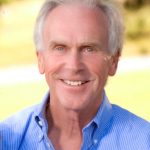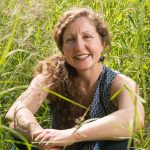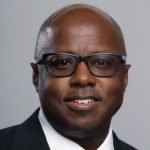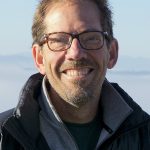Beyond smoke and mirrors
By Dominick DellaSala; Originally published in the Ashland Daily Tidings, August 29, 2018
Just about every day someone has a quick-fix logging “solution” and scapegoat to blame for the growing wildfire problem caused by years of climate neglect and poor planning. Meanwhile, smoke and fires are damaging our local economy, forcing home evacuations and causing tragic loss of life. Everyone wants to do something. So, what do we know about wildfires and is there a simple solution, given fires are not going away, no matter how hard we try?
Climate change plus industrial logging plus human-caused fire ignitions equal fire increases
Since the 1980s, wildfire acres have been increasing, although much fewer acres burn now compared to historic times. The main culprit — dinosaur carbon used to run our cars, homes and factories is conspiring climatically with carbon released from deforestation. The consequence — the hotter/drier it gets, the more fires we see.
Beyond smoke and mirrors
By Dominick DellaSala; Originally published in the Ashland Daily Tidings, August 29, 2018
Just about every day someone has a quick-fix logging “solution” and scapegoat to blame for the growing wildfire problem caused by years of climate neglect and poor planning. Meanwhile, smoke and fires are damaging our local economy, forcing home evacuations and causing tragic loss of life. Everyone wants to do something. So, what do we know about wildfires and is there a simple solution, given fires are not going away, no matter how hard we try?
Climate change plus industrial logging plus human-caused fire ignitions equal fire increases
Since the 1980s, wildfire acres have been increasing, although much fewer acres burn now compared to historic times. The main culprit — dinosaur carbon used to run our cars, homes and factories is conspiring climatically with carbon released from deforestation. The consequence — the hotter/drier it gets, the more fires we see.
Roberts preps new draft bill for upcoming conference
Marc Heller, E&E News reporter
Originally Published: Wednesday, August 29, 2018 at E&E News
Senate Agriculture Chairman Pat Roberts said yesterday he aims to have a new draft farm bill ready by the time a House-Senate conference committee meets on the legislation next week.
The Kansas Republican told reporters the top four lawmakers on the House and Senate agriculture committees discussed the 2018 farm bill on a conference call yesterday, as they try to iron out differences on nutrition, conservation and other aspects of the five-year measure.
The 2014 farm bill expires at the end of September.
“I think that went well,” Roberts said of the discussion with Senate Agriculture Committee ranking member Debbie Stabenow (D-Mich.) and House Agriculture Chairman Mike Conaway (R-Texas) and ranking member Collin Peterson (D-Minn.).
Asked whether he expects to present a draft conference report to the panel at its first meeting Sept. 5, Roberts said: “That’s the goal. We’re not there yet. More meetings and more phone calls.”
With the expiration of the current farm bill looming, and midterm elections weeks later, pressure is growing on the Republican-led Congress to complete a bill before a potential flip of the House to Democratic control.
Logging Provisions in House Farm Bill Scientist Letter
217 Scientists call on Congress to oppose logging provisions in the House Farm Bill.
217 Scientists call on Congress to oppose logging provisions in the House Farm Bill
As scientists with backgrounds in ecological sciences and natural resources management, we are greatly concerned about proposals to speed up and expand logging on public lands in response to recent increases in wildfires in the West – proposals such as the House version of the 2018 Farm Bill. There are pragmatic, science-based solutions that can maintain biologically diverse fire-dependent ecosystems while reducing risks to communities and firefighters facing some of the most active fire seasons in recent memory. Unfortunately, such solutions are getting lost in the endless rhetoric and blaming that has characterized wildfires in the media, Congress, and the Trump administration. We the undersigned are calling on decision makers to facilitate a civil dialogue and careful consideration of the science to ensure that any policy changes will result in communities being protected while safeguarding essential ecosystem processes.
Klondike fire crews brace for ‘long fight ahead’
BY ANNETTE MCGEE RASCH FOR THE MAIL TRIBUNE, August 18, 2018
With the Taylor Creek and Klondike fires merged at nearly 120,000 acres — and still growing — many southwestern Oregonians fear the blaze is poised to enter the record books alongside the 2002 Biscuit fire and last year’s Chetco Bar fire.
In an effort to quell that possibility, fire managers brought in reinforcements from California Saturday with the goal of full suppression.
Because of the fire’s size and complex challenges, operations have been split between two teams: Taylor Creek Klondike East based near Selma, and Taylor Creek Klondike West, now headquartered at the Curry County Fairgrounds in Gold Beach.
California’s Interagency Incident Management Team 4 took over operations on the entire west-facing flank of the fire complex Saturday. This team possesses experience with steep terrain and dry fuel types, and plans to go into “full suppression mode” to protect coastal residents.
Klondike fire crews brace for ‘long fight ahead’
BY ANNETTE MCGEE RASCH FOR THE MAIL TRIBUNE, August 18, 2018
With the Taylor Creek and Klondike fires merged at nearly 120,000 acres — and still growing — many southwestern Oregonians fear the blaze is poised to enter the record books alongside the 2002 Biscuit fire and last year’s Chetco Bar fire.
In an effort to quell that possibility, fire managers brought in reinforcements from California Saturday with the goal of full suppression.
Because of the fire’s size and complex challenges, operations have been split between two teams: Taylor Creek Klondike East based near Selma, and Taylor Creek Klondike West, now headquartered at the Curry County Fairgrounds in Gold Beach.
California’s Interagency Incident Management Team 4 took over operations on the entire west-facing flank of the fire complex Saturday. This team possesses experience with steep terrain and dry fuel types, and plans to go into “full suppression mode” to protect coastal residents.
Re: Open Statement to the Trump Administration
Date: August 16, 2018
At the Geos Institute, we take seriously the statements made by Secretary Ryan Zinke that Americans concerned about timber harvesting on public lands are “environmental terrorists.”
Like so many of our fellow Americans, we explore, fish, hike, recreate, and enjoy our public lands. We are parents, homeowners, scientists, and everyday people working to advance social and ecological causes using the public processes our democracy was founded upon.
People advocating on behalf of the environment have cleaned up our air and water and prevented irreparable harm to ecosystems across our nation. Public lands are a key part of our children’s inheritance and we are proud to defend them against ill-conceived management and resource extraction.
We do not employ violence or the threat of violence in our efforts to protect the public lands that provide essential services to our communities. We deplore the use of violence because it is immoral to harm, or threaten to harm, others in the course of advocating for a particular action.
Unfounded verbal attacks like those from the Trump Administration violate the fundamental basis of our democracy – the idea that we can passionately debate issues in the public sphere freely without fear of harm. They impede our ability to work proactively in our communities on fire preparation – the very activities that protect homes, lives, and livelihoods.
The comments made by Secretary Zinke create a wedge where there is no need to have one and put Americans at risk of violence and misdirected retaliatory actions. Addressing climate change and its effects on wildfires is a complex endeavor, one that requires people with level heads to work together. Rhetoric like this gets in the way of real solutions and moves us backward. We expect and deserve better from our leaders.
As always, we stand ready to work with the Administration on proactive community protection from wildfires and we ask that administration officials refrain from statements that could lead to violence in our communities.
Keep the Tongass wild and roadless
By Dominick DellaSala, John Schoen and John Talberth
Originally published by the Juneau Empire, August 14, 2018
Alaskans are blessed with some of the wildest, most biologically prolific forests on the planet. Nowhere else is this more evident than the Tongass rainforest, the crown jewel of the national forest system. Unfortunately, the State of Alaska announced plans to team up with the Trump Administration to open up millions of acres to logging and road-based developments. This ill-conceived proposal would degrade the region’s pristine character and the foundation of a robust outdoor economy.
The Roadless Conservation Rule of 2001 protected over 58 million acres of the nation’s most remote places. It was the premier conservation achievement of its time that took years of careful deliberation, an unprecedented number of public meetings, over 1 million strongly (more than 95 percent) supportive public comments, and the backing of hundreds of scientists, all of who wanted the Tongass included.
While the Roadless Rule protects intact areas larger than 5,000 acres from logging, it has numerous allowances to include road connections between communities and other state highway projects, access to mining claims under the Mining Law of 1872, and access to utility corridors and hydropower projects. Some 55 projects within roadless areas in Alaska have been rapidly approved by the Forest Service. The Roadless Rule there fore is working in Alaska and plans to gut it are misguided.
Keep the Tongass wild and roadless
By Dominick DellaSala, John Schoen and John Talberth
Originally published by the Juneau Empire, August 14, 2018
Alaskans are blessed with some of the wildest, most biologically prolific forests on the planet. Nowhere else is this more evident than the Tongass rainforest, the crown jewel of the national forest system. Unfortunately, the State of Alaska announced plans to team up with the Trump Administration to open up millions of acres to logging and road-based developments. This ill-conceived proposal would degrade the region’s pristine character and the foundation of a robust outdoor economy.
The Roadless Conservation Rule of 2001 protected over 58 million acres of the nation’s most remote places. It was the premier conservation achievement of its time that took years of careful deliberation, an unprecedented number of public meetings, over 1 million strongly (more than 95 percent) supportive public comments, and the backing of hundreds of scientists, all of who wanted the Tongass included.
While the Roadless Rule protects intact areas larger than 5,000 acres from logging, it has numerous allowances to include road connections between communities and other state highway projects, access to mining claims under the Mining Law of 1872, and access to utility corridors and hydropower projects. Some 55 projects within roadless areas in Alaska have been rapidly approved by the Forest Service. The Roadless Rule there fore is working in Alaska and plans to gut it are misguided.
Latest News
Stay Updated!
Sign up to stay updated on our current initiatives and receive information you can use to build resilience in your community.

 Arsum is the Senior Adaptation and Coastal Resilience Specialist for the National Wildlife Federation’s Southcentral Region. In this role, she advances climate adaptation efforts, with a focus on nature-based approaches to address the impacts of climate change and extreme events across the Gulf region. She has authored and co-authored numerous publications on climate impact assessments and adaptation solutions. Additionally, she regularly participates in state-based coastal resilience and hazard mitigation planning across the Gulf, collaborating with regional and local stakeholders.
Arsum is the Senior Adaptation and Coastal Resilience Specialist for the National Wildlife Federation’s Southcentral Region. In this role, she advances climate adaptation efforts, with a focus on nature-based approaches to address the impacts of climate change and extreme events across the Gulf region. She has authored and co-authored numerous publications on climate impact assessments and adaptation solutions. Additionally, she regularly participates in state-based coastal resilience and hazard mitigation planning across the Gulf, collaborating with regional and local stakeholders. Frank is the former President of the Reinsurance Association of America. Frank currently serves on the Advisory Board of the OECD’s International Network for the Financial Management of Large-Scale Disasters, the RAND Center on Catastrophic Risk Management and Compensation, and the University of Cincinnati’s Carl H. Lindner III Center for Insurance and Risk Management Advisory Board.
Frank is the former President of the Reinsurance Association of America. Frank currently serves on the Advisory Board of the OECD’s International Network for the Financial Management of Large-Scale Disasters, the RAND Center on Catastrophic Risk Management and Compensation, and the University of Cincinnati’s Carl H. Lindner III Center for Insurance and Risk Management Advisory Board. Jim is a multilingual world traveler. Based in Bavaria during the 1970s, Jim spent most of this period in India, Afghanistan and Nepal, where he founded and operated a charitable medical clinic serving Tibetan Refugees. He settled in Oregon in 1983 on a forested ranch in the Umpqua National Forest.
Jim is a multilingual world traveler. Based in Bavaria during the 1970s, Jim spent most of this period in India, Afghanistan and Nepal, where he founded and operated a charitable medical clinic serving Tibetan Refugees. He settled in Oregon in 1983 on a forested ranch in the Umpqua National Forest. Dr. Micah Hahn is an Associate Professor of Environmental Health in the Institute for Circumpolar Health Studies at the University of Alaska-Anchorage. She received her joint PhD in Epidemiology / Environment and Resources from the University of Wisconsin-Madison and her MPH in Global Environmental Health from Emory University. Subsequently, she was a postdoctoral fellow for the CDC Climate and Health Program, and in this position worked collaboratively with the CDC Division of Vector-borne Diseases and the National Center for Atmospheric Research. Her research focuses on understanding the health impacts of climate change and working with communities to develop locally-relevant adaptation and resilience-building strategies. Dr. Hahn is also on the Management Team of the Alaska Climate Adaptation Science Center.
Dr. Micah Hahn is an Associate Professor of Environmental Health in the Institute for Circumpolar Health Studies at the University of Alaska-Anchorage. She received her joint PhD in Epidemiology / Environment and Resources from the University of Wisconsin-Madison and her MPH in Global Environmental Health from Emory University. Subsequently, she was a postdoctoral fellow for the CDC Climate and Health Program, and in this position worked collaboratively with the CDC Division of Vector-borne Diseases and the National Center for Atmospheric Research. Her research focuses on understanding the health impacts of climate change and working with communities to develop locally-relevant adaptation and resilience-building strategies. Dr. Hahn is also on the Management Team of the Alaska Climate Adaptation Science Center. Michael is a former Founding Principal of Resilient Cities Catalyst, a global non-profit helping cities and their partners tackle their toughest challenges. He is currently the Executive Director of Climate Resilience Academy at the University of Miami.
Michael is a former Founding Principal of Resilient Cities Catalyst, a global non-profit helping cities and their partners tackle their toughest challenges. He is currently the Executive Director of Climate Resilience Academy at the University of Miami. Dr. Quintus Jett is a consultant, educator, and strategist for public causes. He has a doctorate in Organizations & Management from Stanford University, and a two-decade faculty career which spans schools, departments, and programs of business, engineering, liberal studies, divinity, and public and nonprofit management. Following Hurricane Katrina in 2005, Dr. Jett launched a volunteer project in New Orleans, which enlisted residents, students from over a dozen colleges and universities, and hundreds of others to field map the city’s Gentilly district, Lower Ninth Ward, and New Orleans East. Dr. Jett is an innovator in higher education, bridging the divide between academic research and the other priorities of the modern university, including student access and diversity, community engagement, and providing foundations for life-long learning in today’s rapidly changing world.
Dr. Quintus Jett is a consultant, educator, and strategist for public causes. He has a doctorate in Organizations & Management from Stanford University, and a two-decade faculty career which spans schools, departments, and programs of business, engineering, liberal studies, divinity, and public and nonprofit management. Following Hurricane Katrina in 2005, Dr. Jett launched a volunteer project in New Orleans, which enlisted residents, students from over a dozen colleges and universities, and hundreds of others to field map the city’s Gentilly district, Lower Ninth Ward, and New Orleans East. Dr. Jett is an innovator in higher education, bridging the divide between academic research and the other priorities of the modern university, including student access and diversity, community engagement, and providing foundations for life-long learning in today’s rapidly changing world. Scott is Monfort Professor of Atmospheric Science at Colorado State University. He has written about 100 publications in the peer-reviewed climate literature, is a former editor of the Journal of Climate, and served for five years as founding Science Chair of the North American Carbon Program.
Scott is Monfort Professor of Atmospheric Science at Colorado State University. He has written about 100 publications in the peer-reviewed climate literature, is a former editor of the Journal of Climate, and served for five years as founding Science Chair of the North American Carbon Program. Linda has many years of experience in disaster preparedness and resilience. She has been an elected official on the Linn County Iowa Board of Supervisors, Chair of the Metropolitan Planning Organization, the East Central Iowa Council of Governments, the statewide Mental Health Developmental Disability and the Linn County Board of Health. Langston is a former president of the National Association of Counties (2013-2014).
Linda has many years of experience in disaster preparedness and resilience. She has been an elected official on the Linn County Iowa Board of Supervisors, Chair of the Metropolitan Planning Organization, the East Central Iowa Council of Governments, the statewide Mental Health Developmental Disability and the Linn County Board of Health. Langston is a former president of the National Association of Counties (2013-2014). Ken works with families and organizations as a mediator, organizational consultant, trainer and facilitator. Along with his passion for helping people prepare for and reduce climate change, Ken also volunteers as a mediator through Mediation Works and is passionate about supporting youth through mentoring with Boys to Men of Southern Oregon.
Ken works with families and organizations as a mediator, organizational consultant, trainer and facilitator. Along with his passion for helping people prepare for and reduce climate change, Ken also volunteers as a mediator through Mediation Works and is passionate about supporting youth through mentoring with Boys to Men of Southern Oregon. Matthew is a retired high school teacher who was once honored as Oregon High School Social Studies Teacher of the Year. Before his teaching career he was in the restaurant business in Portland. He is also a lawyer who has been a member of the Oregon State Bar Association since 1980.
Matthew is a retired high school teacher who was once honored as Oregon High School Social Studies Teacher of the Year. Before his teaching career he was in the restaurant business in Portland. He is also a lawyer who has been a member of the Oregon State Bar Association since 1980. Andrea is the Resilience Policy Advisor for the North Carolina Office of Recovery and Resiliency. She works across state agencies and with local governments to increase the state’s resilience to the impacts of climate change.
Andrea is the Resilience Policy Advisor for the North Carolina Office of Recovery and Resiliency. She works across state agencies and with local governments to increase the state’s resilience to the impacts of climate change.